Basic to Super-advanced: The Evolution of Kiosk Machines and their Use-Cases
Self-service kiosk machines are nowadays widely used in a wide spectrum of scenarios or settings owing to their benefits. Some of the major benefits are convenience, fast and secure transactions, and improved operational efficiency. These kiosk terminals are highly versatile and can be used for both indoor and outdoor environments. This blog covers various use-case scenarios of self-service kiosks, and they range from the commonly-found, conventional use-cases to the less explored, contemporary applications. I’ve also mentioned about the factors that fuel the use-case diversification, trying to dig into the market scenario and customer preferences. If you have plans to diversify your business and explore the emerging self-service use-case scenarios, this blog will surely help you.
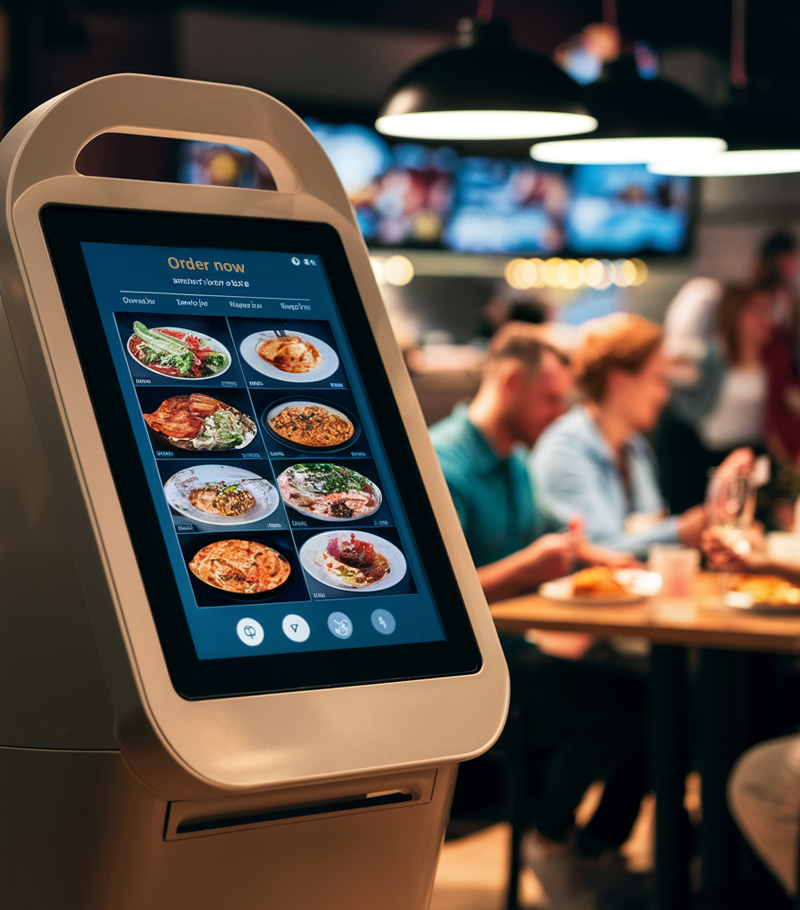
1. Self-ordering kiosk for Restaurant industry
Now, most of us are quite familiar with this use-case scenario. Most of the renowned fast food giants like the McDonald’s, KFC, Taco Bell, Subway, Burger King etc, have dedicated self-service kiosk solutions to automate and streamline their food-ordering process.
You might have seen these self-service kiosk machines in various types or designs like the In-store kiosks, drive-thru, or countertop.
How does a restaurant self-ordering kiosk machine work?
The work flow of a restaurant kiosk is listed below.
Benefits of Restaurants kiosks
These food-ordering kiosks offer several rewarding benefits for the restaurant businesses. And those benefits are mentioned below.
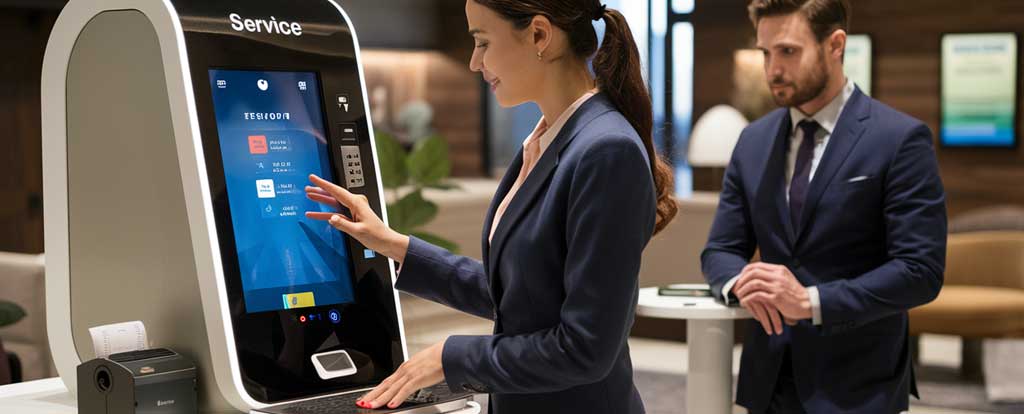
2. Banking sector digital banking kiosk machine
Banking self-service kiosks are widely deployed in banking facilities and institutions. Banking customers can easily perform a plethora of banking transactions via self-service kiosk machines eliminating the interaction with a teller or an agent. Banking kiosk are meticulously designed to automate banking transactions, reduce customer wait times, and improve the overall operational efficiency. In the recent years, we’ve witnessed the transformation of an ordinary banking kiosk into a more interactive and capable “box branch” – Interactive Teller Machine (ITM) that facilitates live video chat with a banking personnel.
How does a self-service banking kiosk work?
A typical banking self-service kiosk comes loaded with necessary hardware components to automate banking transactions like touchscreen interface, card reader, thermal printer, cash acceptor and dispenser, cheque scanner, cheque book printer, card printer, biometric scanner, etc.
The services range from KYC, account opening to the instant issuance of personalized debit cards.
Benefits of a banking self-service kiosk
The benefits of self-service automation of banking services are mentioned below.
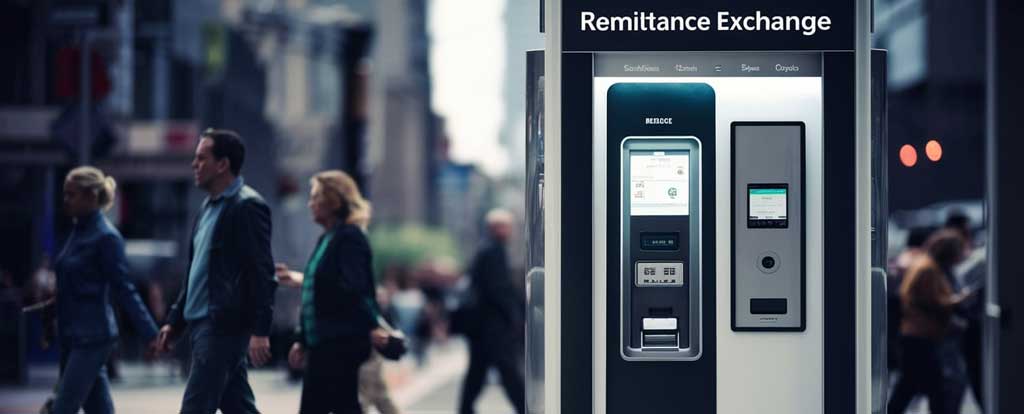
3. Remittance kiosk machine for money exchange providers
A remittance kiosk or money exchange kiosk automates the tasks carried out by the conventional money exchange houses. A registered customer can make use of the remittance kiosk to transfer money from his/her account to the beneficiary account with ease, thereby, eliminating manual intervention. As a matter of fact, the customers needn’t have to visit the crowded money exchange houses and stand in the long lines to transfer money. Money exchange kiosks can be deployed at airports, shopping malls, hotels and labour camps.
How does a remittance kiosk work?
A remittance kiosk is integrated with all the necessary hardware components to streamline the remittance process. Usually, remittance kiosks are loaded with a touchscreen interface, card reader, cash depositor, cash dispenser, receipt printer, biometric scanner etc.
What are the benefits of a remittance kiosks?
Self-service automation of money exchange services offers following benefits:
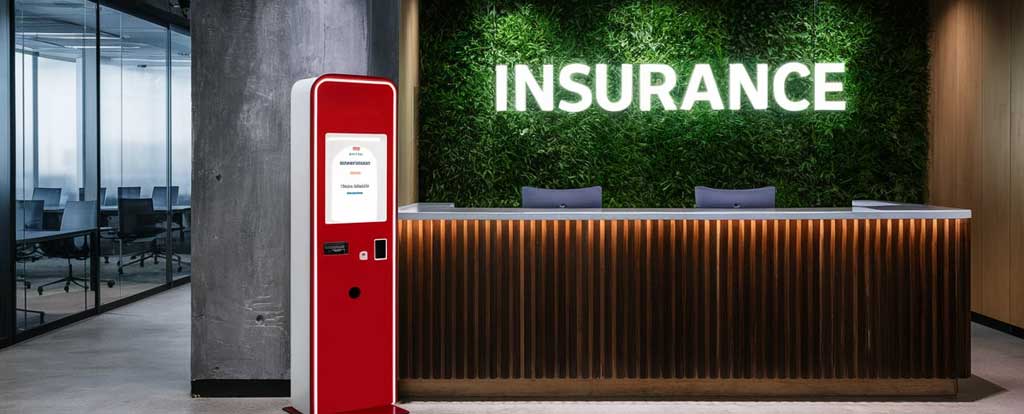
4. Insurance self-service kiosk machine for Insurance sector
Through self-service kiosk automation, an insurance company can sell their policy via a self-service kiosk. A self-service insurance kiosk performs most of the tasks performed by the conventional insurance agencies like selling and renewal of policies, compliance and KYC, payment processing etc. The kiosk serves as an automated insurance sales point that requires least human intervention. You may deploy an insurance kiosk at busy locales, airports and shopping malls.
How does an insurance kiosk work?
The insurance kiosk is loaded with hardware components like touchscreen, document scanner, receipt printer, document printer, biometric scanner etc.
Benefits of Insurance kiosk
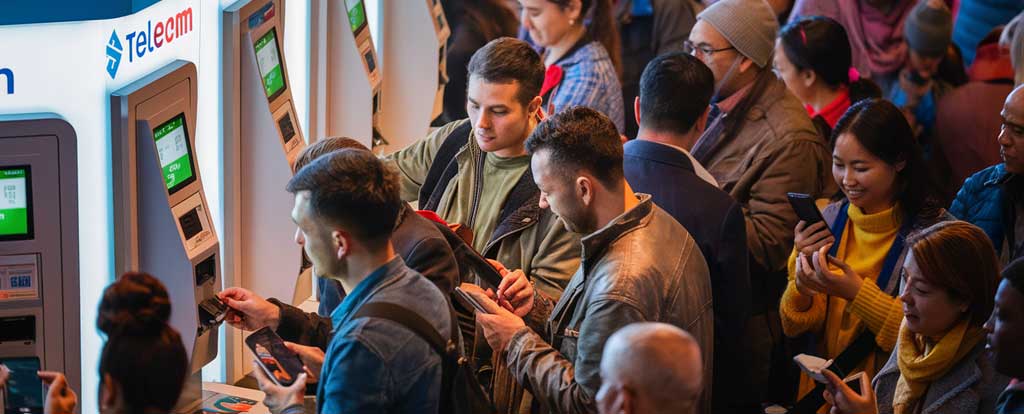
5. Telecom self-service kiosk machine (SSM) for telecom industry
Self-service telecom kiosks provide a quick, convenient, and secure way to handle the telecom needs of the customers. Telecom self-service kiosk machines serves as an effective platform to stay ahead in the competitive telecom sector. A fully-equipped telecom self-service machine can automate most of the services offered by the conventional customer service points.
Key features of a telecom self-service machine
Benefit of a telecom kiosk
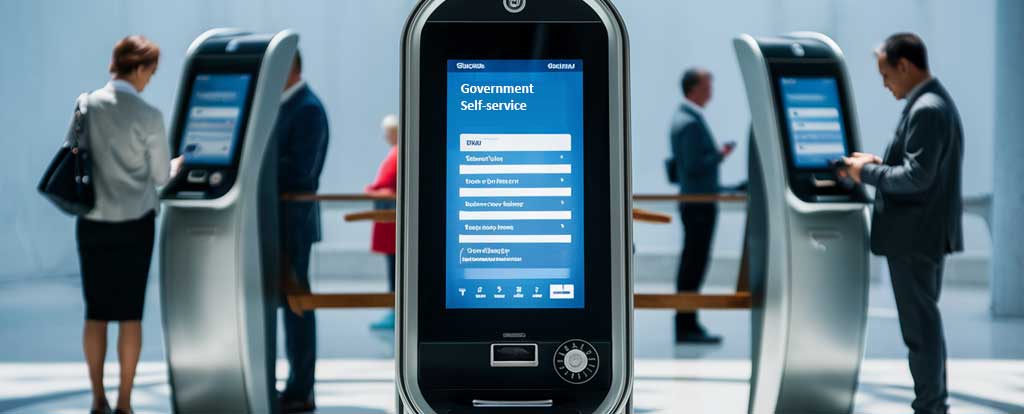
6. Government self-service kiosk machine for government sector
Self-service e-Government kiosks bridge the gap between government institutions and the general public. The citizens can make use of the government kiosks to access government services, government-owned websites, policy-related matters, updates etc.
Government kiosks can offer services related to a single department or local body or integrate the services offered by multiple departments into a single Kiosk system.
Services offered by e-Government kiosks
Self-service government kiosks offer a wide range of services for citizens like issuance of documents, renewal of certificates or ID cards, information dissemination, payment processing, and a lot more. Government departments like police department, RTA, postal department, land and municipality bodies etc. can leverage the e-government kiosks to improve their services to the public.
Benefits of Government Kiosks

7. Retail mall kiosk machine for retail industry
A Retail kiosk can a be fantastic add-on to the customer’s overall shopping experience. The kiosk allows customers to quickly checkout, dispense shopping gifts cards, vouchers or prepaid cards and is ideal for the retail sector.
How does a retail kiosk work?
A retail kiosk or mall kiosk allows customers to perform checkouts quickly and dispense their gifts cards without having to wait in the long lines. Here is how it works.
Benefits of a retail kiosk
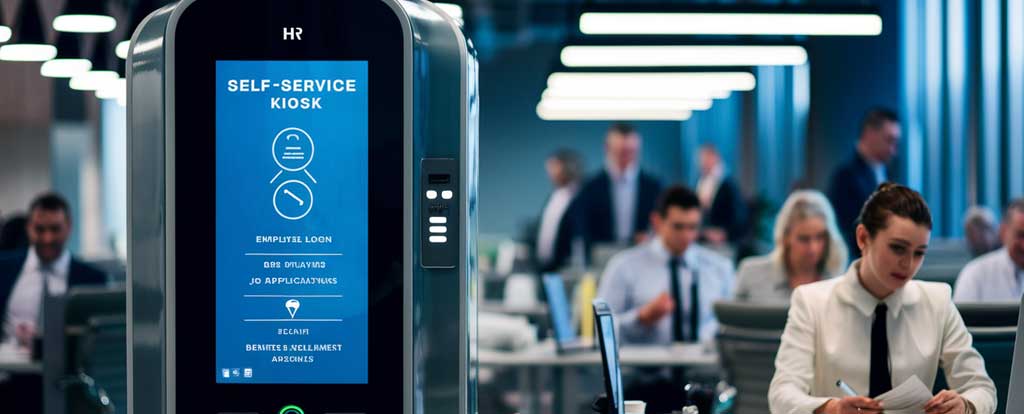
8. HR self-service kiosk machine for Corporate sector
An HR kiosk is widely used in the corporate sector to streamline HR operations. An HR kiosk machine bridges the gap between the HR personnel and employees. The employees can make use of the HR kiosk/Employee self-service kiosk to access a wide range of HR functions without directly interacting with HR personnel. This also helps the HR professionals in reducing their day-to-day work-load.
The self-service HR kiosk can be installed at any location within the premises of a company, such as the entrance or in the lobby area, whichever is more convenient.
Features of an HR kiosk
The important HR functions are listed below.
Benefits
The HR kiosk is beneficial for HR personnel, the employees and the establishment, as a whole. Some of the major benefits are shared below.
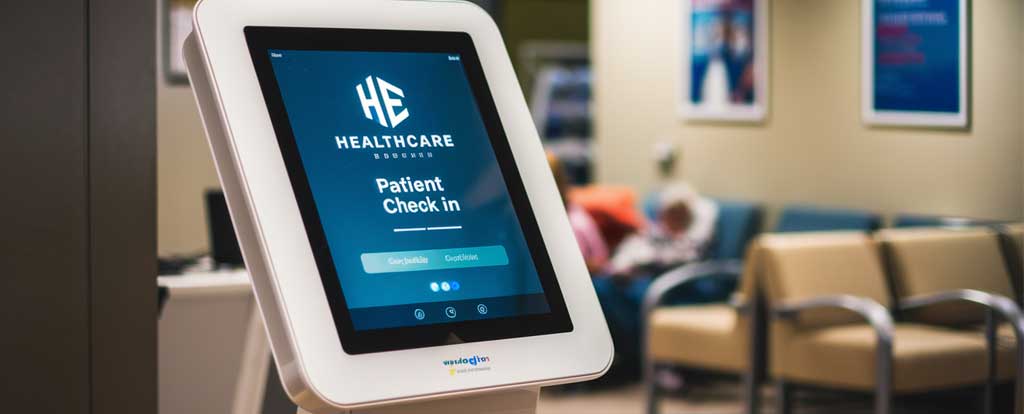
9. Patient check-in kiosk for Healthcare sector
A patient check-in or hospital kiosk is an excellent solution to streamline the day-to-day hospital operations. A patient check-in kiosk reduces the patient waiting time considerably by automating the patient check-in process. Hospital kiosks are usually installed at hospital reception areas or in the front lobby to provide easy access to the patients.
Here are some of the functionalities of a Hospital Kiosk.
Benefits of a hospital kiosk
The benefits of hospital kiosks are listed below.
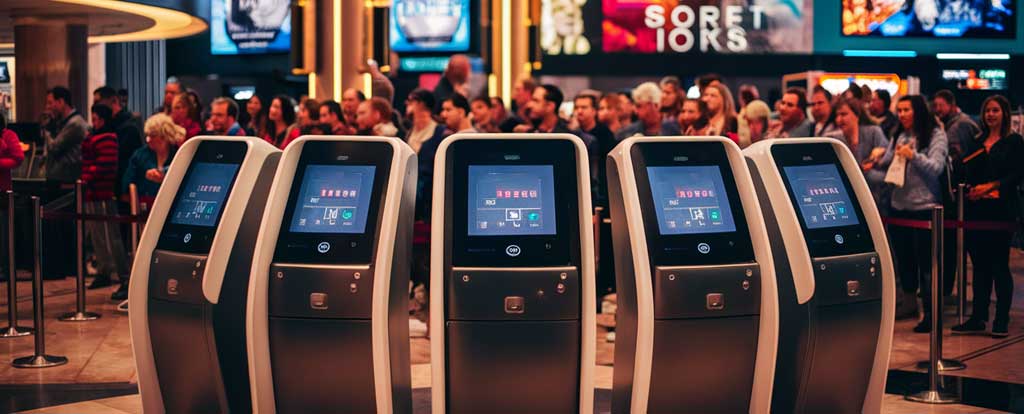
10. Cinema ticketing kiosks for Entertainment industry
Cinema or Movie kiosks for entertainment sector basically stands for automated ticket issuance. These self-service machines are widely deployed at movie houses, malls and other entertainment venues. The customers can purchase movie tickets by paying cash or card. Besides those who buy tickets online or via mobile app can print the tickets from the cinema kiosks. In addition to ticket issuance, movie kiosks are equipped with a number of additional capabilities to enhance the overall CX.
Other functionalities
Benefits of Movie/Entertainment kiosk
The benefits of hospital kiosks are listed below.

11. Charity kiosk machines for non-profits
Charity kiosk is an interactive kiosk terminal that supports the fundraising initiatives of nonprofit organizations. A charity kiosk machine effectively conveys the purpose of the fundraising campaigns via the interactive kiosk screen through interactive videos, puzzles, slideshows etc. The interactive content helps to attract the attention of the public and conveys the campaign purpose in an easily understandable and engaging manner.
Charity or donation kiosks can be deployed at any convenient location with sufficient footfall like shopping malls, busy junctions, airports etc.
Benefits of donation kiosks
Donations kiosks offer several rewarding benefits to the organizers. Some of them are mentioned below.
Benefits of Movie/Entertainment kiosk
The benefits of hospital kiosks are listed below.
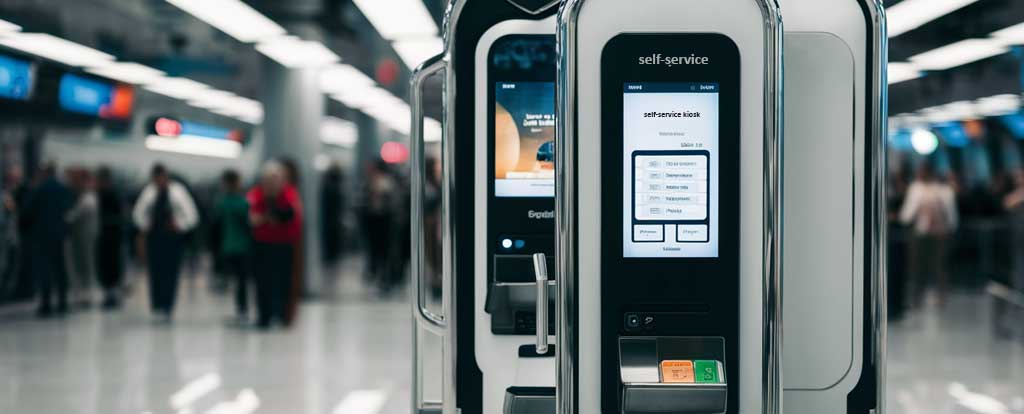
Factors behind diversifying and innovating self-service use-case scenarios
There are several driving factors behind the diversification of self-service use-case scenarios. And, of course, one of the vital factors are technological innovation. Understanding those factors is vital for service providers who are already into self-service kiosk-assisted services and for others who would like to invest in the technology in the near future. Here are they!
Technological innovation
Changing customer expectations
Cost considerations
Gen Z preferences
Competition
To stay ahead of the intense competition, businesses make use of advanced kiosk solutions or integrate advanced technology into the kiosk terminal. This give them a competitive edge in their respective domains and also helps them offer improved services to their customers. Moreover, fast and efficient services coupled with top-notch CX aids in Customer retention.
You can expect more and more self-service kiosk use-case diversification in the years to come. The facts and considerations furnished above substantiate the same. Even global changes and events can have an impact or become a catalyst in this diversification process. So, let’s hope for the best.
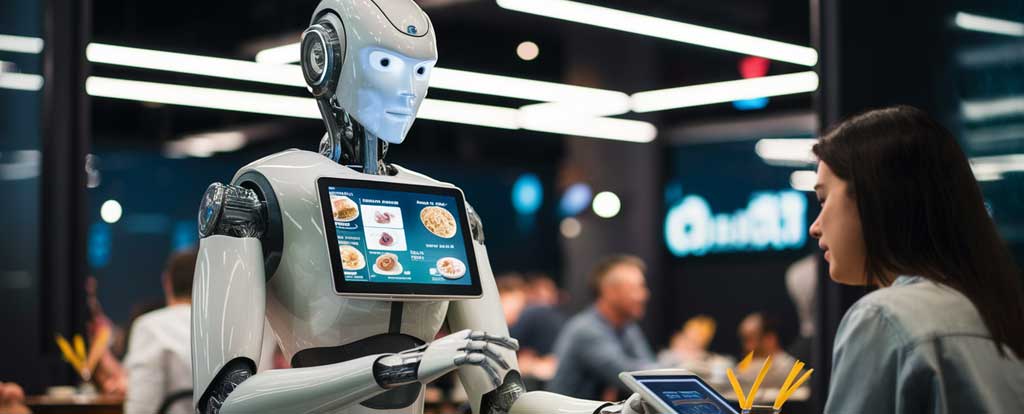
Extended use-case scenarios of self-service kiosk machines
1) Robotic Kiosk in restaurants
Have you been to any restaurant where the dishes are prepared by robots? Automated robotic baristas can prepare and serve coffee to the customers in a couple of minutes. Robots cafes are already trending in countries like Japan. A futuristic concept called “Robot café”, is right now transforming the conventional restaurant dining experience. Yes, cute-looking robots have taken the control of restaurants and they prepare meals, handle serving and even give company for the visitors!
Robotic kiosk are sophisticated self-service kiosk machines that make use of robotic technology to carry out various operations independently without human intervention or support. The technology helps restaurant owners to streamline restaurant operations and enhance customer services.
The robot named Pepper deployed in the restaurant named Pepper Parlor in Tokyo, Japan performs multiple restaurant tasks like greeting and chatting with customers, table sharing etc.
Robotic kiosk - functionality
With the help of highly sophisticated robotic arms, Robotics kiosks perform various sophisticated operations with accurate precision. The robot kiosk performs tasks like dispensing of ingredients, preparing drinks and dishes like burger, coffee etc. and serving the dishes to the customers. Some of the robots are fantastic entertainers as they can sing and even dance for the customers. A “robotainment” indeed!
Benefits
Robotic kiosks have the potential to fully transform the conventional restaurant experiences.

2) Drive-thru kiosks for car wash businesses
A drive-thru self-service kiosk machine can expedite and streamline the operations of your car wash business. Most of the modern car wash facilities make use of self-service technology owing to the obvious advantage of 24/7 operations. Self-service automation reduces customer wait times and improves the overall efficiency of the car wash facility.
How does a car wash kiosk work?
Increased wait times and lack of qualified staff can slow down the operations in a car wash. A self-service kiosk eliminates these scenarios. The customers need to follow certain basic instructions. And here are they.
See, how simple and convenient the entire process is!
Benefits
The major benefits are furnished below.

3) Key-drop kiosk for automotive sector
A key-drop kiosk provides key-drop and pick-up services for a wide range of automotive-related services. Your customers would appreciate, if you could provide after-hours or 24/7 services as they find it highly convenient. Whether you provide a detailed car service or a car wash or even a tire-detailing, there is huge scope for key-drop facilities.
How does a key-drop kiosk work?
The customers can straight away access the key-drop kiosk machine after entering the premises of the service provider.
Key pick-up process
Benefits of a key-drop kiosk

4) RFID kiosks for retail sector
RFID kiosks or RFID technology-assisted kiosks are employed in several industries for a wide range of applications due to their versatility. RFID technology makes use electromagnetic waves to access information from tagged objects. The RFID system involves RFID reader and RFID tags. The data retrieval process takes places as a result of the interaction of electromagnetic wave signals between the RFID reader and RFID tags. RFID kiosks and systems are used in retail, healthcare, libraries (education), transportation, and many other sectors.
How RFID is used in retail sector?
3 use-case scenarios of RFID technology in retail sector are mentioned below.
Benefits of RFID kiosks
To Conclude
On a concluding note, let us have a look at an important statistic.
Based on the research conducted by Arizton Advisory & Intelligence, in 2022, the global self-service kiosk market value was $26.4 billion. As of 2028, the value is forecasted to rise to $43.6 billion, achieving a growth rate of 8.71%.
Enhanced operational efficiency, improved CX and reduced expenses are the three major deciding factors that fuel the adoption of self-service kiosks in the global market.
Self-service kiosk machines are becoming more secure, easy to use, and able to integrate with other digital solutions as technology develops, opening the door for cutting-edge uses like biometric authentication, AI-powered customer support, etc.
Businesses can employ self-service kiosks to maintain competitiveness and satisfy the ever-evolving needs of today's tech-savvy customers by adapting the emerging use-case applications.
Investing in these versatile machines not only streamlines operations but also creates a more convenient and engaging customer experience, laying the groundwork for future expansion and innovation.
